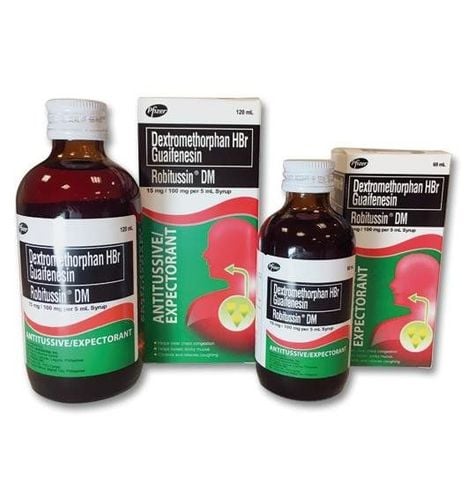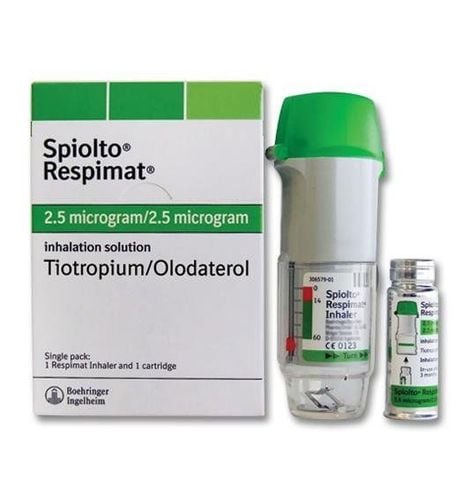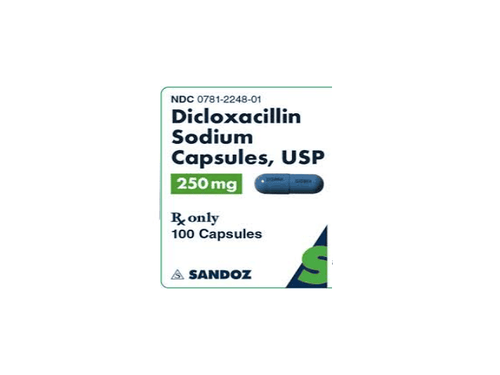This is an automatically translated article.
Belonging to the group of bronchodilators, Bambumed 10 is prescribed by doctors to treat emphysema, chronic bronchitis or other lung diseases. So what is Bambumed 10 medicine? Find out in the article below.
1. What are the uses of Bambumed 10?
1.1. What is Bambumed 10mg? Bambumed 10mg belongs to the group of bronchodilators, with registration number VD-22480-15, manufactured by DP Me Di Sun Joint Stock Company - Vietnam.
Bambumed 10 includes the following ingredients:
Main active ingredient: Bambuterol HCL with 10 mg of Excipients: Wheat starch; Lactose; Talc powder; Magnesium Stearate; Sodium Starch Glycolate; PVP K30. The drug is prepared in the form of 10mg tablets, blisters of 10 tablets, boxes of 3 blisters. The drug is recommended for use in children 2 years of age and older and adults.
1.2. What are the uses of Bambumed 10mg? Bambuterol has a relaxing effect on bronchial smooth muscle, inhibits the release of endogenous spasmolytics, inhibits edematous reactions induced by endogenous chemical mediators, and increases clearance of the ciliary system. mucus transfer.
Bambumed 10 mg is prescribed by doctors for the following cases:
Asthma. Chronic bronchitis, emphysema and other lung diseases with spasms.
2. How to use Bambumed 10
2.1. How to take Bambumed 10mg Bambumed 10 is made in a convenient tablet form for oral administration. Patients need to take the drug with a sufficient amount of filtered water, take only 1 dose and should take the medicine before going to bed. The patient should not break, chew, or crush the tablet, but should swallow the whole tablet. Do not mix the drug with any other mixture. The patient needs to take the medicine as directed by the doctor 2.2. Dosage of Bambumed 10mg Bambuterol is used for the maintenance treatment of asthma and other lung diseases associated with spasms.
The indicated dose is 1 time/day. Dose adjustment is required for each individual. Adults and children over 6 years of age: the initial dose is 1 tablet/time/day. The dose may be increased to 2 tablets once daily after 1-2 weeks, depending on clinical effect. In patients previously well tolerated by oral beta-2 agonists, the starting dose is 2 tablets once daily. In patients with impaired renal function (GFR ≤ 50 ml/min), the initial dose is 1⁄2 tablets once daily, which may be increased to 1 tablet daily after 1-2 weeks, depending on clinical efficacy. . Children 2-6 years old: The indicated dose is 1⁄2 tablets/time/day or as directed by a physician.
3. Handling missed dose and drug overdose
Handling when missed dose: The drug is only used once a day and it is recommended to take it before going to bed, so patients use the drug to limit the missed dose by setting a reminder to avoid forgetting the dose.
If you forget a dose, take it as soon as possible. However, if it is almost time for your next dose, skip the missed dose and take your next dose at the scheduled time. Note that double the prescribed dose should not be taken.
Treatment of overdose: Currently, no case of overdose due to Bambuterol has been recorded. However, an overdose will lead to high levels of Terbutaline in the blood and the appearance of symptoms and signs similar to Terbutaline overdose.
Treatment: Usually no treatment is needed when taking an overdose of Bambumed 10mg. In case of severe overdose, it is necessary to carry out the following methods:
Gastric lavage, activated charcoal. Monitor frequency, heart rate, blood pressure, blood sugar, electrolytes, acid-base balance. An appropriate antidote is a selective beta-2 receptor blocker, but should be used with caution in patients with a history of bronchospasm. If the drop in blood pressure is due to a decrease in beta-2-mediated peripheral resistance, plasma volume replacement is required.
4. Contraindications of Bambumed 10
Patients who are allergic to the main active ingredient Bambuterol or any of the excipients listed above of Bambumed 10mg.
5. Notes when using Bambumed 10
Because terbutaline is excreted mainly by the kidneys, the dose should be reduced by half in patients with impaired renal function (GFR ≤ 50 ml/min). In patients with cirrhosis and in patients with severe hepatic impairment from other causes, the daily dose must still be individually adjusted. During treatment, it is necessary to assess whether the patient's ability to convert bambuterol to terbutaline is impaired. Therefore, from a practice point of view, direct administration of the active metabolite terbutaline would be more appropriate for these patients. As with all beta-2 agonists (including Bambuterol ) should be used with extreme caution in patients with thyrotoxicosis and severe cardiovascular disease such as tachycardia, ischemic heart disease. localized or severe heart failure. Due to the hypoglycemic effect of beta-2 agonists, further glycemic control is required in diabetic patients when treatment with Bambumed 10 mg is initiated. Drug Interactions:
Severe hypokalemia may occur during treatment with Bambuterol. Particular caution should be exercised in acute severe asthma due to the increased risk of hypokalemia with hypoxemia. A hypokalemic effect may occur with combination therapy and may be aggravated by concomitant therapy with xanthine derivatives, steroids and diuretics. Serum potassium levels should be monitored in these cases. Bambuterol prolongs the muscle relaxant effects of Suxamethonium (Succinylcholine). This effect is due to plasma cholinesterase, which inactivates suxamethonium partially inhibited by bambuterol. The inhibition was dose-dependent and was completely reversible upon discontinuation of treatment with Bambuterol. This interaction should also be considered with other muscle relaxants metabolised by Cholinesterase. Bambuterol prolongs the muscle relaxant effects of suxamethonium (succinylcholine). Beta-blockers can partially or completely block the effects of beta-receptor agonists.
6. Side effects of Bambumed 10
Adverse effects have been reported, such as muscle tremors, headache, cramps, palpitations, which are characteristic manifestations of sympathomimetic amines. The intensity of adverse events is dose dependent. These side effects will gradually disappear within 1-2 weeks of treatment. Sleep disturbances and behavioral disturbances such as agitation and restlessness have also been reported, but at an undetermined frequency. Inform your doctor about unwanted side effects of the drug.
7. How to store Bambumed 10
The shelf life of Bambumed 10 is within 36 months from the date of manufacture. Store in a cool, dry place, at a temperature not exceeding 30°C, in the original packaging and protected from light. Keep out of reach of CHILDREN. In summary, Bambumed 10 is a bronchodilator, so it is indicated for the treatment of a number of respiratory diseases. To ensure effective treatment and avoid side effects, users need to strictly follow the instructions and instructions of the doctor.
Follow Vinmec International General Hospital website to get more health, nutrition and beauty information to protect the health of yourself and your loved ones in your family.
Please dial HOTLINE for more information or register for an appointment HERE. Download MyVinmec app to make appointments faster and to manage your bookings easily.













